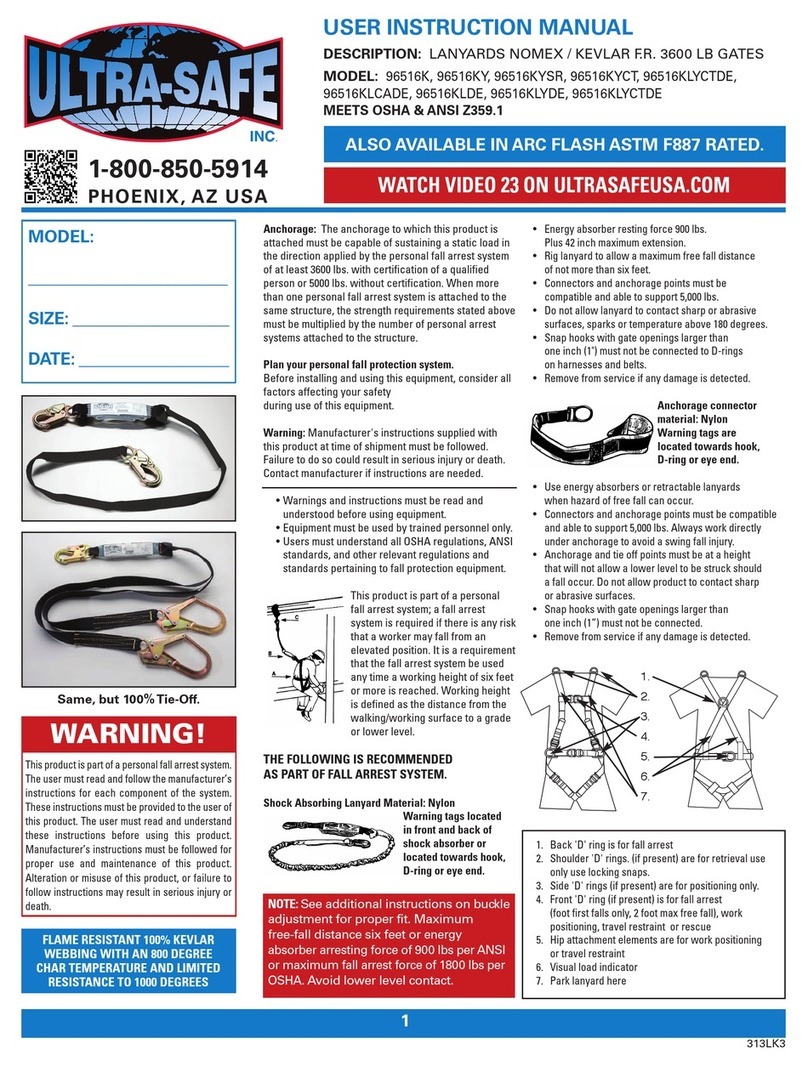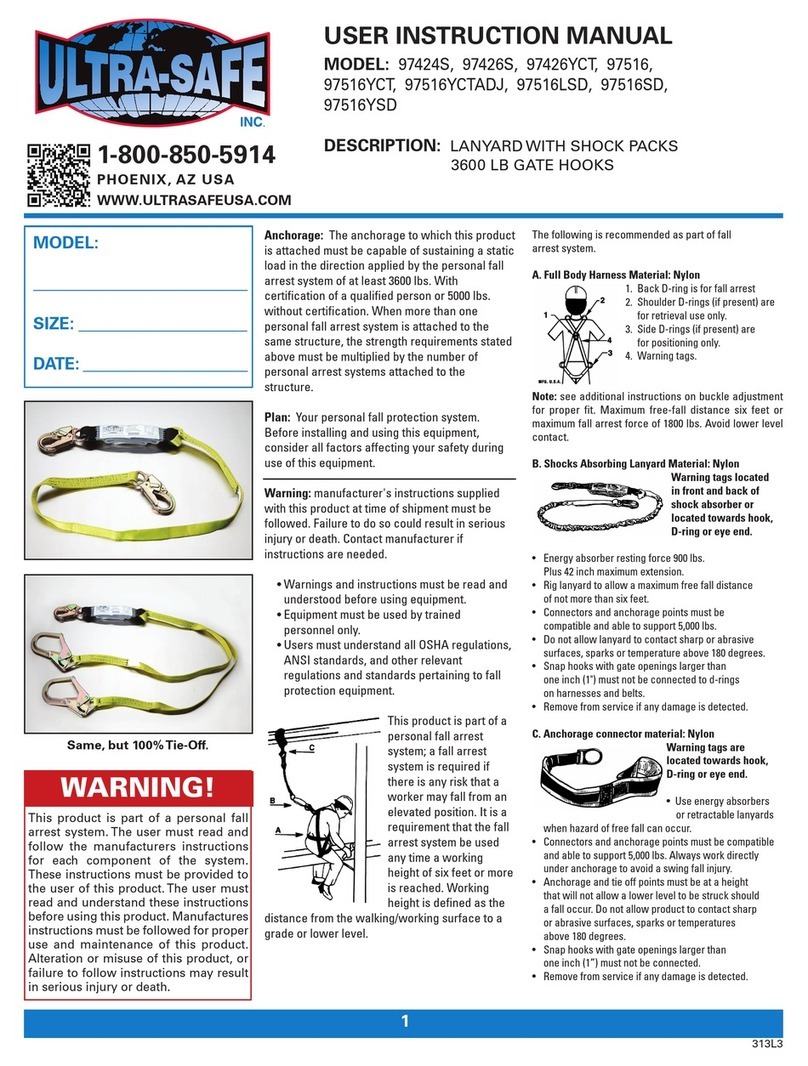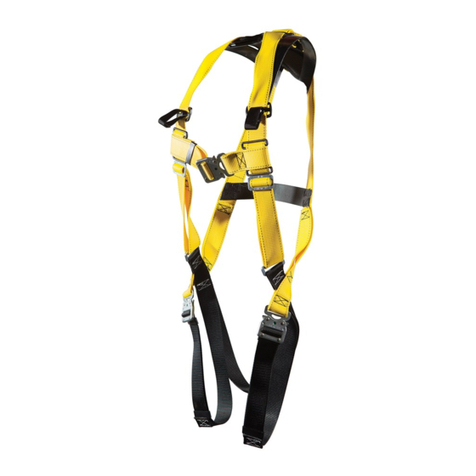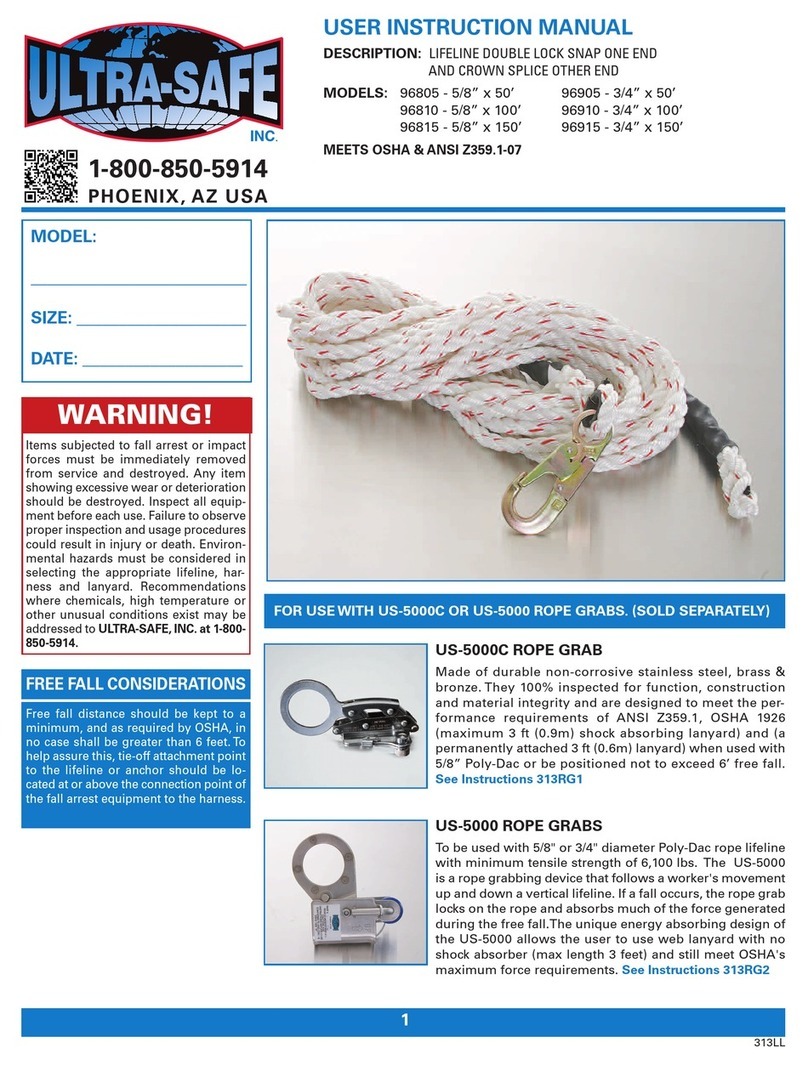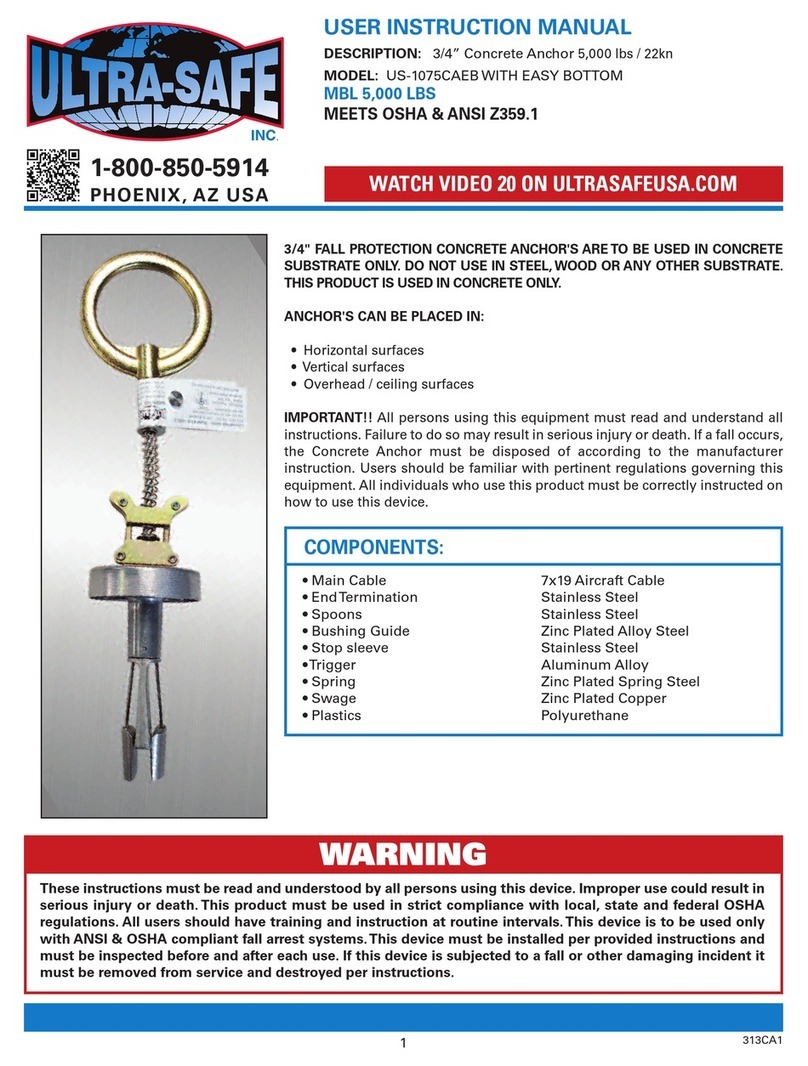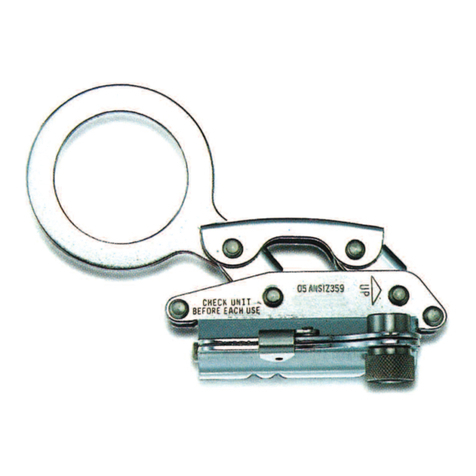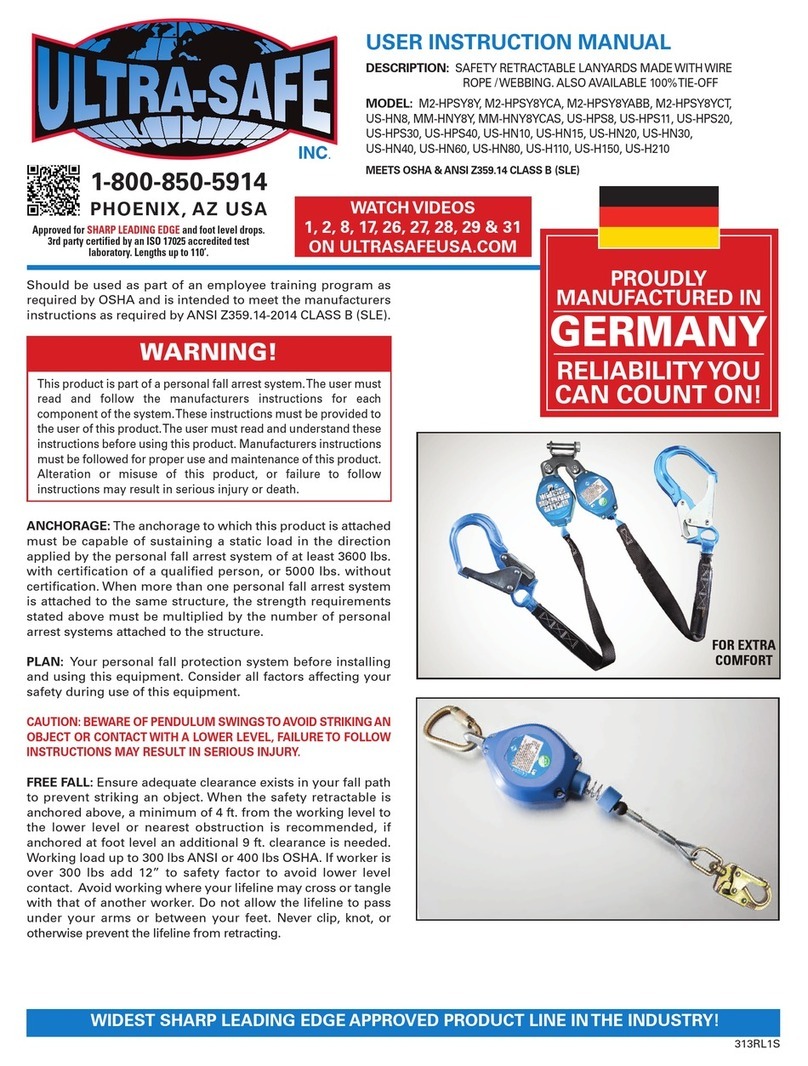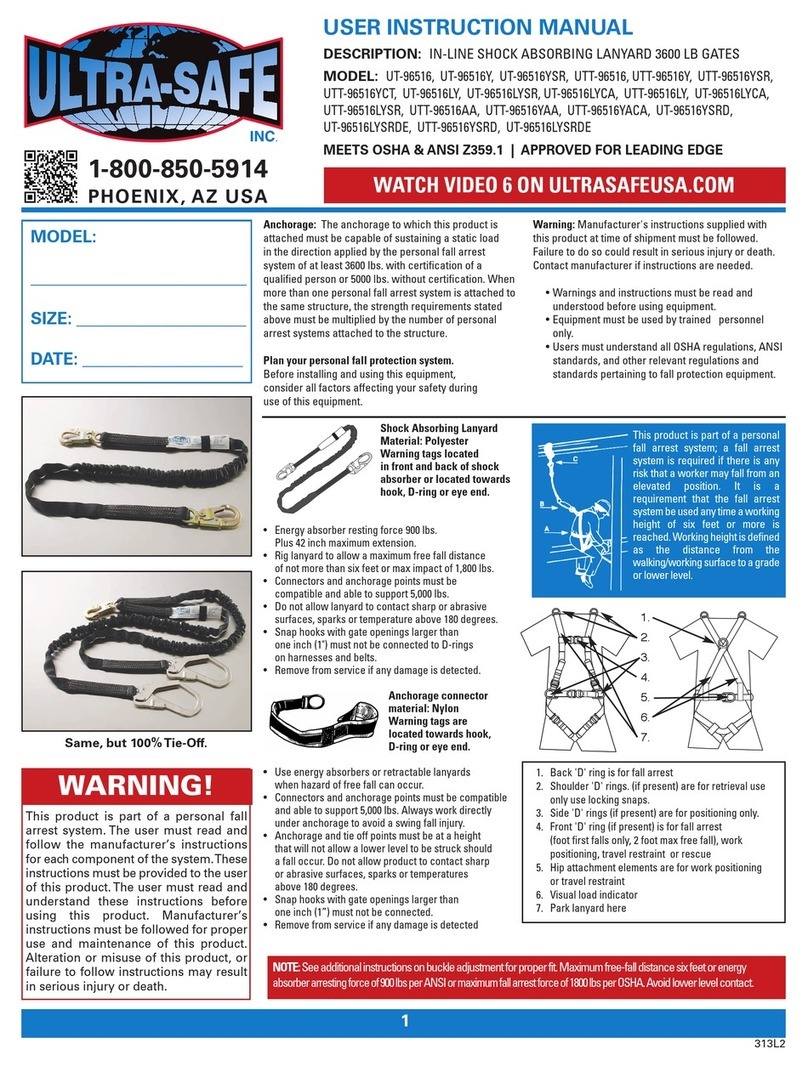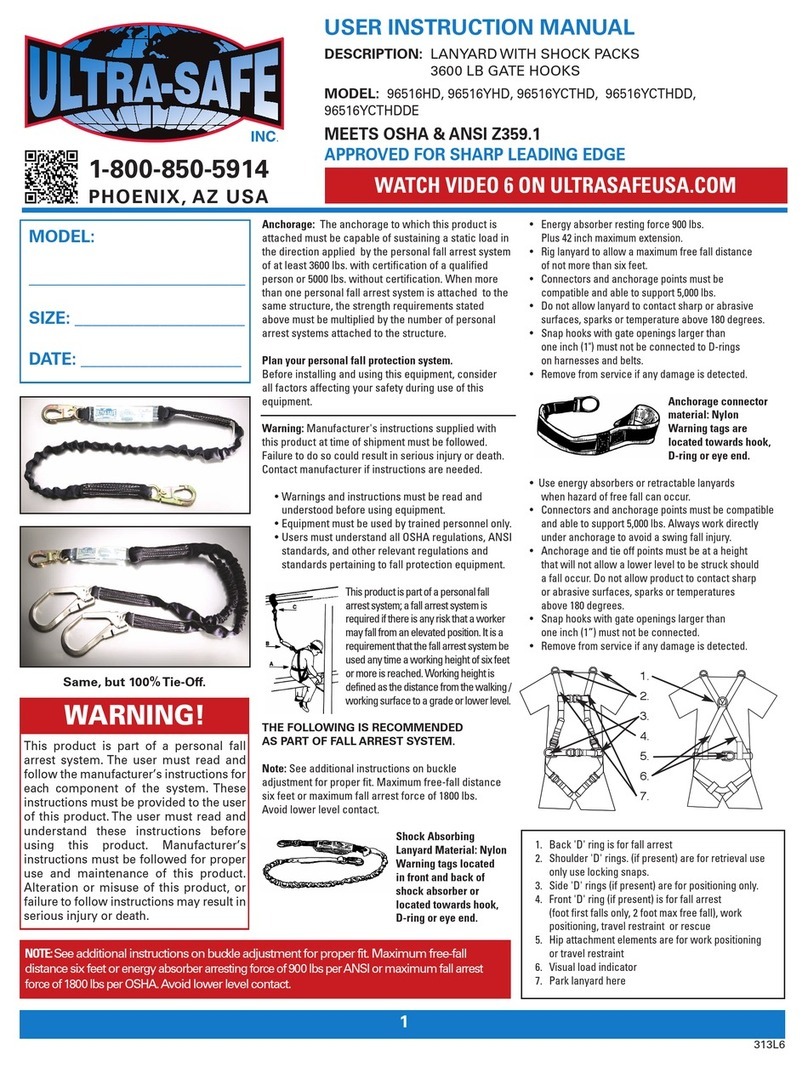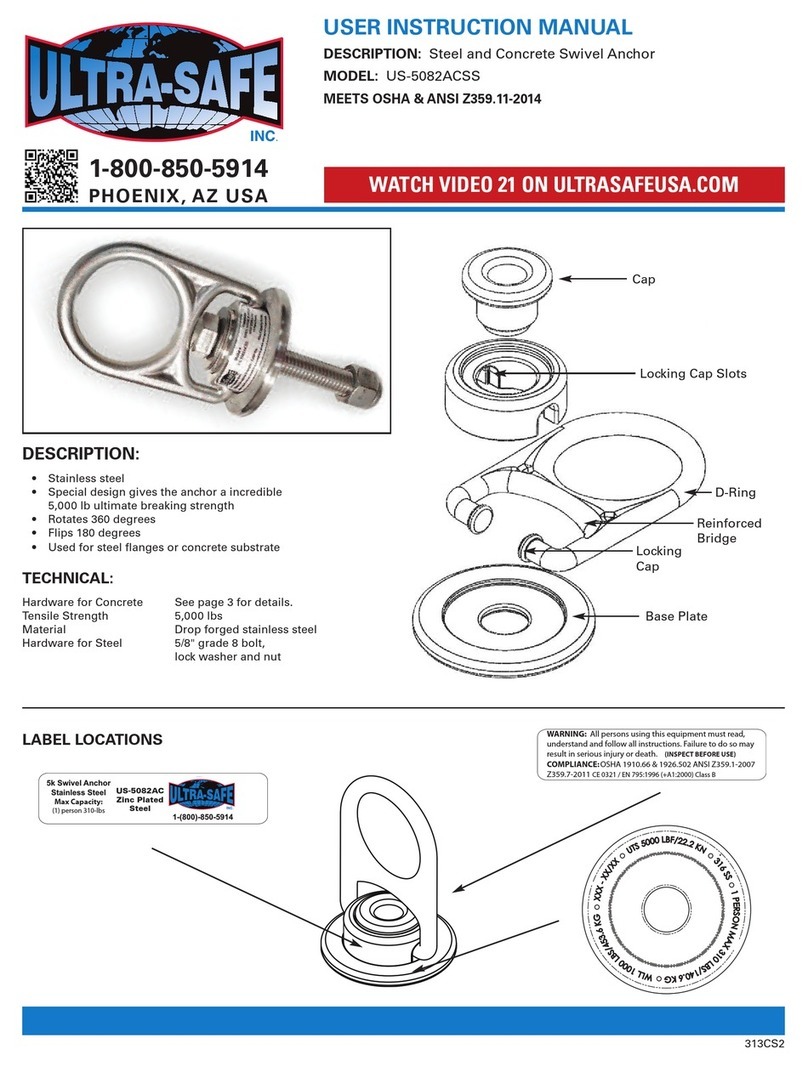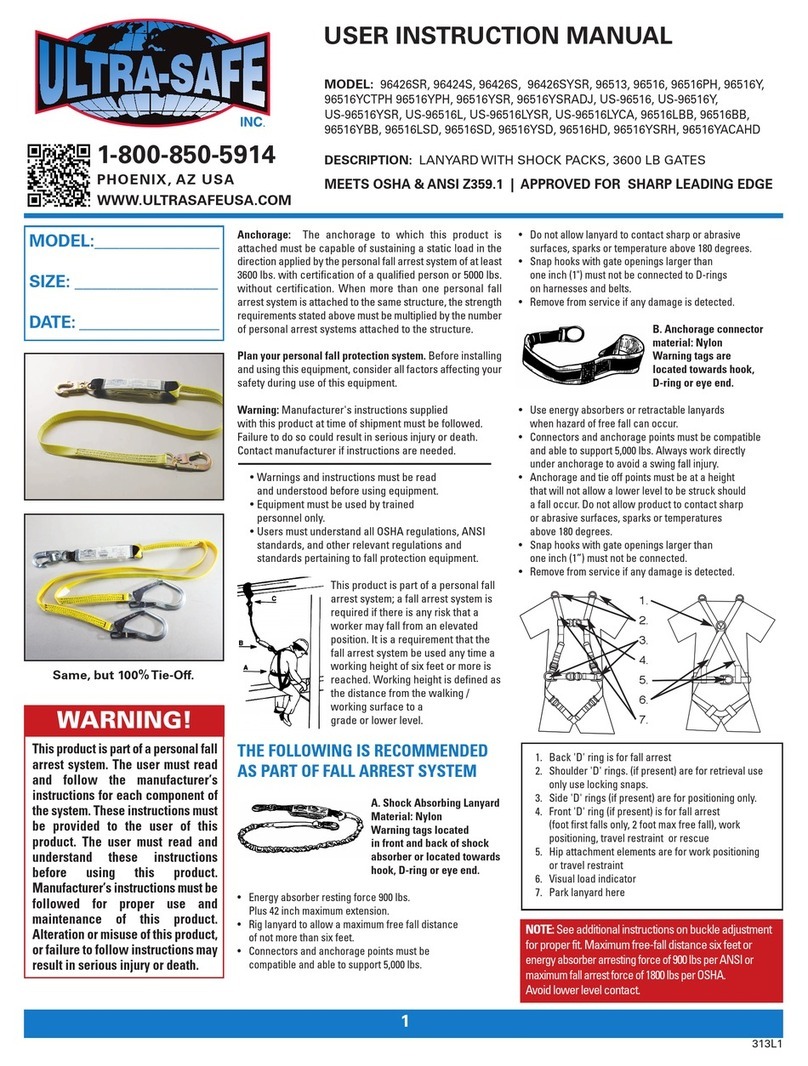
WARNING!
This produ t is part of a personal fall
arrest system. The user must read and
follow the manufa turers instru tions
for ea h omponent of the system.
These instru tions must be provided to
the user of this produ t. The user must
read and understand these instru tions
before using this produ t. Manufa tures
instru tions must be followed for proper
use and maintenan e of this produ t.
Alteration or misuse of this produ t, or
failure to follow instru tions may result
in serious injury or death.
1
USER INSTRUCTION MANUAL
MODEL:
UT-97516, UT-97516Y, UT-97516YBC, UTT-97516,
UTT-97516Y, UTT-97516YCT, UTT-97516YD, UTT-97516YCTD,
UTT-97516YCTDE
DESCRIPTION: IN-LINE SHOCK ABSORBER
3600LB GATE HOOKS
1 800 850 5914
PHOENIX, AZ USA
WWW.ULTRASAFEUSA.COM
MODEL:
_________________________
_
SIZE: ____________________
DATE: ___________________
_
Anchorage: The anchora e to which this product
is attached must be capable of sustainin a static
load in the direction applied by the personal fall
arrest system of at least 3600 lbs. With
certification of a qualified person or 5000 lbs.
without certification. When more than one
personal fall arrest system is attached to the
same structure, the stren th requirements stated
above must be multiplied by the number of
personal arrest systems attached to the
structure.
Plan: Your personal fall protection system.
Before installin and usin this equipment,
consider all factors affectin your safety durin
use of this equipment.
Warn ng: manufacturer's instructions supplied
with this product at time of shipment must be
followed. Failure to do so could result in serious
injury or death. Contact manufacturer if
instructions are needed.
• Warnin s and instructions must be read and
understood before usin equipment.
• Equipment must be used by trained
personnel only.
• Users must understand all OSHA re ulations,
ANSI standards, and other relevant
re ulations and standards pertainin to fall
protection equipment.
This product is part of a
personal fall arrest
system; a fall arrest
system is required if
there is any risk that a
worker may fall from an
elevated position. It is a
requirement that the fall
arrest system be used
any time a workin
hei ht of six feet or more
is reached. Workin
hei ht is defined as the
distance from the walkin /workin surface to a
rade or lower level.
The followin is recommended as part of fall
arrest system.
A. Full Body Harness Mater al: Nylon
1. Back D-rin is for fall arrest
2. Shoulder D-rin s (if present) are
for retrieval use only.
3. Side D-rin s (if present) are
for positionin only.
4. Warnin ta s.
Note: see additional instructions on buckle adjustment
for proper fit. Maximum free-fall distance six feet or
maximum fall arrest force of 1800 lbs. Avoid lower level
contact.
B. Shocks Absorb ng Lanyard Mater al: Nylon
Warn ng tags located
n front and back of
shock absorber or
located towards hook,
D-r ng or eye end.
• Ener y absorber restin force 900 lbs.
Plus 42 inch maximum extension.
• Ri lanyard to allow a maximum free fall distance
of not more than six feet.
• Connectors and anchora e points must be
compatible and able to support 5,000 lbs.
• Do not allow lanyard to contact sharp or abrasive
surfaces, sparks or temperature above 180 de rees.
• Snap hooks with ate openin s lar er than
one inch (1") must not be connected to d-rin s
on harnesses and belts.
• Remove from service if any dama e is detected.
C. Anchorage connector mater al: Nylon
Warn ng tags are
located towards hook,
D-r ng or eye end.
•
Use ener y absorbers
or retractable lanyards
when hazard of free fall can occur.
• Connectors and anchora e points must be compatible
and able to support 5,000 lbs. Always work directly
under anchora e to avoid a swin fall injury.
• Anchora e and tie off points must be at a hei ht
that will not allow a lower level to be struck should
a fall occur. Do not allow product to contact sharp
or abrasive surfaces, sparks or temperatures
above 180 de rees.
• Snap hooks with ate openin s lar er than
one inch (1”) must not be connected.
•
Remove from service if any dama e is detected.
Same, but 100% Tie Off.
313L4
